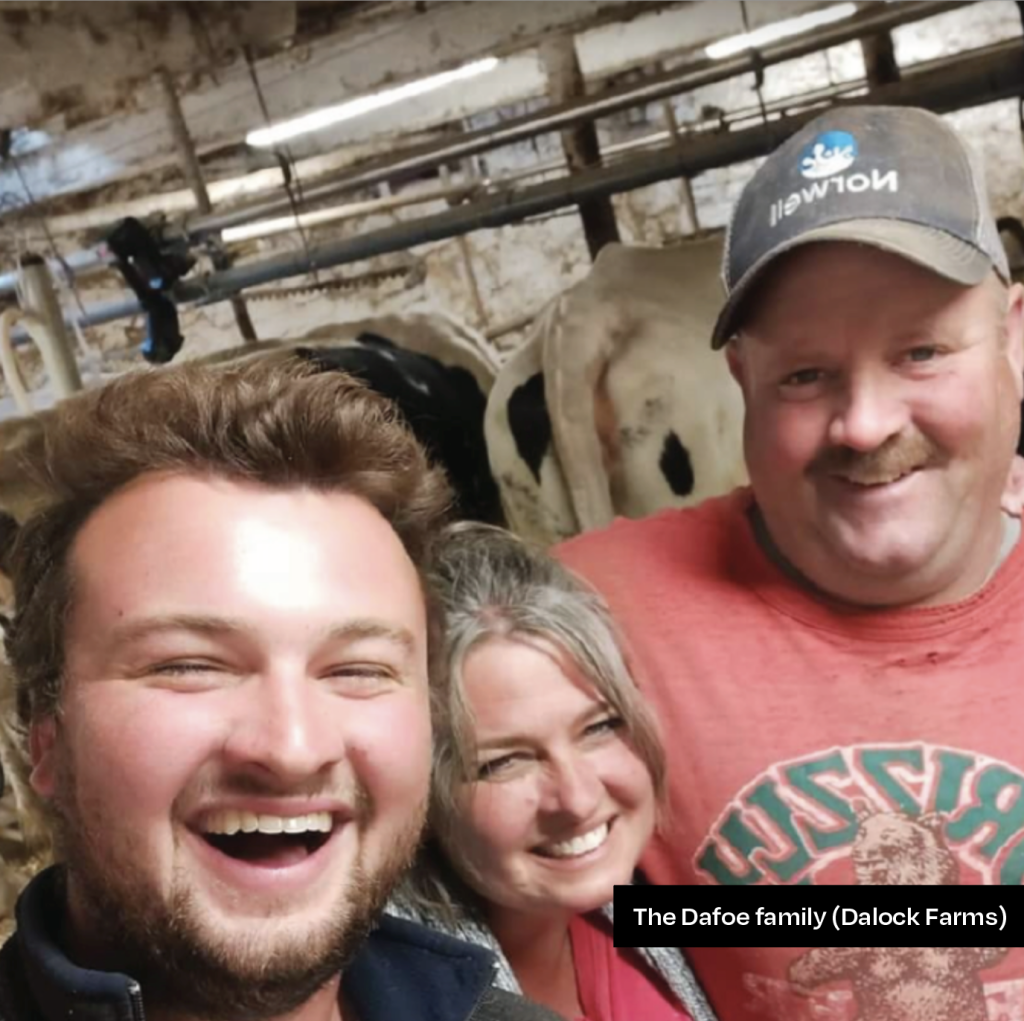-
Case studies developed
0 -
Podcasts created
0 -
Interviews conducted
0
Peer-Based Learning to Support Improvements in Animal Care: Lessons Learned from Ontario Dairy Farmers

View project outputs
Dairy Farmer Case Studies & Technical Note
| Soniusfield Farms | Cranberry Creek Dairy | Martville Farms | Chevalley | |
| Hawthorne Valley | Richford Farms | Belmoral Farms | Technical Note | |
| Dalock Farms | Wittikind Jersey Farm | Dunmatt Farms |
Podcasts
| Episode 1: Jake Meeks (Cranberry Creek Dairy) | Episode 4: Building a New Barn | |||
| Episode 2: Tracy Dafoe (Dalock Farms) | Episode 5: Mario Leclerc | |||
| Episode 3: Small Changes Add Up |
Research Paper
How did this project come about?
One of the cornerstones of the Canadian dairy industry’s national quality assurance program, proAction, is an on-farm assessment of animal-based measures, including body condition, lameness, and hock, knee, and neck injuries. These measures reflect the housing and overall management and care of dairy cattle, and are key indicators of their welfare. Years of research have helped build foundational knowledge for the Canadian dairy industry on how to address these important welfare issues. Now, a key need for the industry is to effectively share this information to influence on-farm change and improve animal care. Peer learning is an effective way to influence behavioural change and sharing real stories on farmer success can be highly influential.
The Ontario Ministry of Agriculture, Food, and Rural Affairs (OMAFRA) commissioned ACER Consulting to assess how Ontario dairy farms have changed over time, identify those that have significantly improved, and capture their stories on how they achieved success to showcase best practices and practical examples for improving animal care. This information was then synthesized with the latest scientific evidence and shared with Ontario farmers to support them and their veterinarians in improving dairy cattle welfare on their farms.


What was the objective?
The objective of this project was to combine farmer success stories with summaries of relevant scientific literature to provide tools to support farmers in improving dairy cattle welfare across Ontario.
What did we do?
- We analyzed data from the Dairy Farmers of Ontario (DFO) to explore how farms have changed over time, with respect to lameness and injuries, to identify dairy farms that have significantly improved between assessments.
- Ontario dairy farmers representing different barn types, herd sizes, and regions were interviewed to discuss their specific strategies, management practices, and lessons learned from that experience. Farm advisors were also contacted for an interview to discuss how they worked with their client to improve animal care on the farm.
- We synthesized the latest evidence on best practices for preventing, controlling, and treating each animal-based measure and published this invited review in the Journal of Dairy Science.
- Case studies, podcasts, and a technical fact sheet were developed to create an educational toolkit for Ontario producers and veterinarians to help demonstrate how they can similarly tackle these issues.
- Results of this toolkit are also being shared in the Milk Producer Magazine.
What did we find, and what is the impact?
“You need someone who can challenge you to see what I might have missed…In the dairy farming industry we need to rely on each other.”
Jake Meeks, Cranberry Creek Dairy Farm
In general, farmers shared positive views about the proAction assessments, highlighting that they were an opportunity to receive an extra set of eyes on the farm, bring new items to their attention, and in some cases, it was a good push to make a necessary on-farm change. Farmers made both small and large changes on their farms to improve animal outcomes. Small changes included things like changing the stall base (i.e., replacing mats, using more bedding) and improving bedding management, whereas bigger scale changes consisted of building a new barn or doing a large on-farm renovation.
Farmers appreciated advice and support from advisors and other farmers. Many producers worked closely with their veterinarian, hoof trimmer, or nutritionist to make improvements and monitor changes on their farms. Nearly all of the farmers we spoke with suggested talking to other farmers to discuss similarities in on-farm issues, learn from each other, and get new ideas.
On-farm change is a journey and so is the effort and extension around influencing that change. However, this project revealed that peer learning is already happening every day. Farmers are part of a large community (including farm advisors) where information and best practices are shared and individuals are relying on their networks to support them in making on-farm decisions. While we are still learning the best ways to harness this, encouraging peer learning and developing tool-kits to share these positive messages is a great first step.
Do you have a scientific research, communication, or training need?
Our goal is to create knowledge and tools to improve animal health and welfare, public health, and the environment in a rapidly changing world. We have the skills to help you understand your unique challenge, inform relevant solutions, and maximize influence.